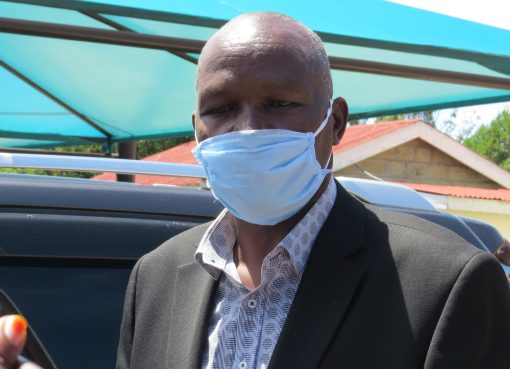As General Amedeo Duca d’ Aosta lay dying from a bout of Malaria and Tuberculosis at a Nairobi Military hospital on March 3, 1942, perhaps his greatest regret was failure by his men to ward off the advance of detachments of the British army in the battle for Ethiopia.
Amedeo had first enrolled at the military college of Reale della Nunziatella of Naples aged 15. It was during his stint at the college where he learnt the rigid culture of strict discipline in the army, a lesson that was to shape his later years in the army where he rose through the ranks to become a lieutenant.
With the outbreak of the First World War in 1914, while aged only 16, he engaged for active duty as a private and was assigned to the Voloire regiment, at the cavalry-artillery unit.
Soon Amedeo rose through the ranks and was soon promoted as a lieutenant and awarded a piloting license in 1925 which came in handy during his flying hours over Africa.
Later following the Italian invasion of Ethiopia in 1937, he became the viceroy of the region and was later appointed Governor-General of Italian East Africa and Ethiopia.
However, when the tide of the Second World War began to turn against the Italians on May 14, 1941, and with his troops suffering from low morale due to shortage of food and water coupled with the Ethiopian cold Amedeo obtained permission from General Benito Mussolini to surrender to the British army under General Cunningham.
History has it that no less than 15 of his men agreed to surrender, vowing to stand by him to the end.
Amedo was finally transferred to the British Camp in Oldonyo Sabuk and registered as prisoner 11590, marking his sunset years for his sterling career as a soldier.
Today, and perhaps true to his wish, the Sacrario Militare Italiano or simply Italian Memorial Church situated along the Nyeri-Ihururu road houses Amdeo’s body together with remains of 700 of his fallen comrades who served under him in the harsh trenches of Africa.
As one drives into the well-maintained compound lined with well-tended trees dating back to the 1950s, the towering structure of the memorial church currently under the Italian Embassy springs to view.
As you walk right into the compound with a roundabout speckled with lovely carnations of different hues, the massive doors of the church engraved with celestial images, one may think he is walking into an ordinary place of worship. It is only after the huge wooden doors are swung open that the secrets that lie behind those massive gates come to view.
“These artistic Biblical features depict 777 which is symbolic that life doesn’t end in death,” explains Fr Postulator Peter Githinji, of the Archdiocese of Nyeri.
“This church is complete with all ecclesiastical features. Inside this church we have Stations of the Cross, crucifix, fonts of holy water, candle holders and even Marian images. It is therefore a complete church serving as a resting place for fallen soldiers,” he continued as we sauntered into the impressive hallway.
The first impression one gets upon entering the impressive church is a place where the faithful frequent every Sunday for their weekly mass owing to the well-arranged wooden pews located in the middle of the hallway.
And just before you move closer to the sacristy, one comes face to face with Amedeo’s tomb clearly marked out with a plaque bearing his name, his year of birth (1898) and year of death (1942) etched in Italian.
Two wreaths of fresh flowers lie at the foot of the marble crypt with two large Lieutenant photos propped nearby.
The church curator Mr Joseph Mutugi informs us that the flowers were donated recently by a visiting Italian tourist.
Yet perhaps it is the symbolic statue bearing a carved portrait of the Lieutenant near the entrance of the church that captures and immortalizes Amedeo’s astute authority over the men under his command.
A ceremonial sword shoved by the side of the statue depicts the image of an officer who still commands his officers even in death.
Entombed against the walls around the vast church, are marked vaults draped with miniature green, white and red Italian flags indicating where each of the 700 soldiers’ remains were finally interred.
We understand that some of these remains were gathered from as far as Tanzania and Uganda before they were finally brought here. “This statue of Amedeo is a true reminder of his iron grip over the soldiers he once commanded. It is a depiction of a man who still holds the instruments of war even in death,” says Fr Githinji.
As he takes us around the church, Mutugi discloses that at least 100 of the soldiers’ remains have been repatriated back to Italy following requests by their families to accord them a decent burial. The most recent repatriation was carried out in 2011.
Mutugi says many of the people who visit the church are Italians and family of the fallen soldiers.
During such calls the visitors bring trinkets and other gifts in memory of the men who paid the ultimate price for the sake of their motherland.
One such donation is a giant metallic chandelier suspended from the wooden beams that form the arch of the church. It was donated in 1967.
“Some of the visitors who come here bring with them valuable gifts to help keep the memory of the soldiers alive. Their drive emanates from the belief that it was out of the selfless service of these soldiers that their country is now living in peace,” he says.
However, since 2019 the place has never had any visitors following the outbreak of the Covid 19 pandemic. “Nevertheless, the families, friends and fellow countrymen of the deceased soldiers have never lost touch with their kinsmen to date,” he says.
Fr Githinji asked the government through the National Museums of Kenya to invest in the premises by creating awareness among Kenyans who may be unaware about its rich cultural heritage.
“I wish to challenge the national government to recognize this place as a historical heritage that is worth investing in as a tourist attraction site. I want to challenge the leadership of this country to come to this church and see what is stored here so that the rest of the people can also have an opportunity to learn about us,” urges the cleric.
On whether the church can hold masses for the faithful Fr. Githinji says the premises is strictly dedicated for memorial services only held every second Sunday of November.
And while such services are open to the public, the majority of those who attend are Italians in keeping with the traditional role of the church.
“We do not hold Sunday mass services here but once every year a memorial service is normally conducted to commemorate the soldiers interred here. Last year the ceremony was held early November after a year break due to the Covid 19 pandemic,” he added.
And as we are about to conclude our tour of the place, the curator takes us outside the church compound where another resting place has been set aside for fallen soldiers who had ascribed to the Islamic faith.
When we inquired why they were separated from their comrades, Mutugi informs us the reason was due to the differences in believes which warranted the separation of Christians and Muslim soldiers.
“It was not possible to place the remains of those who had converted to Islam alongside their Christians colleagues. Therefore, to retain their place in the annals of history it was decided the Muslims be buried outside the church building in respect to their religious beliefs,” he explains.
By Samuel Maina and Ann Ngure





